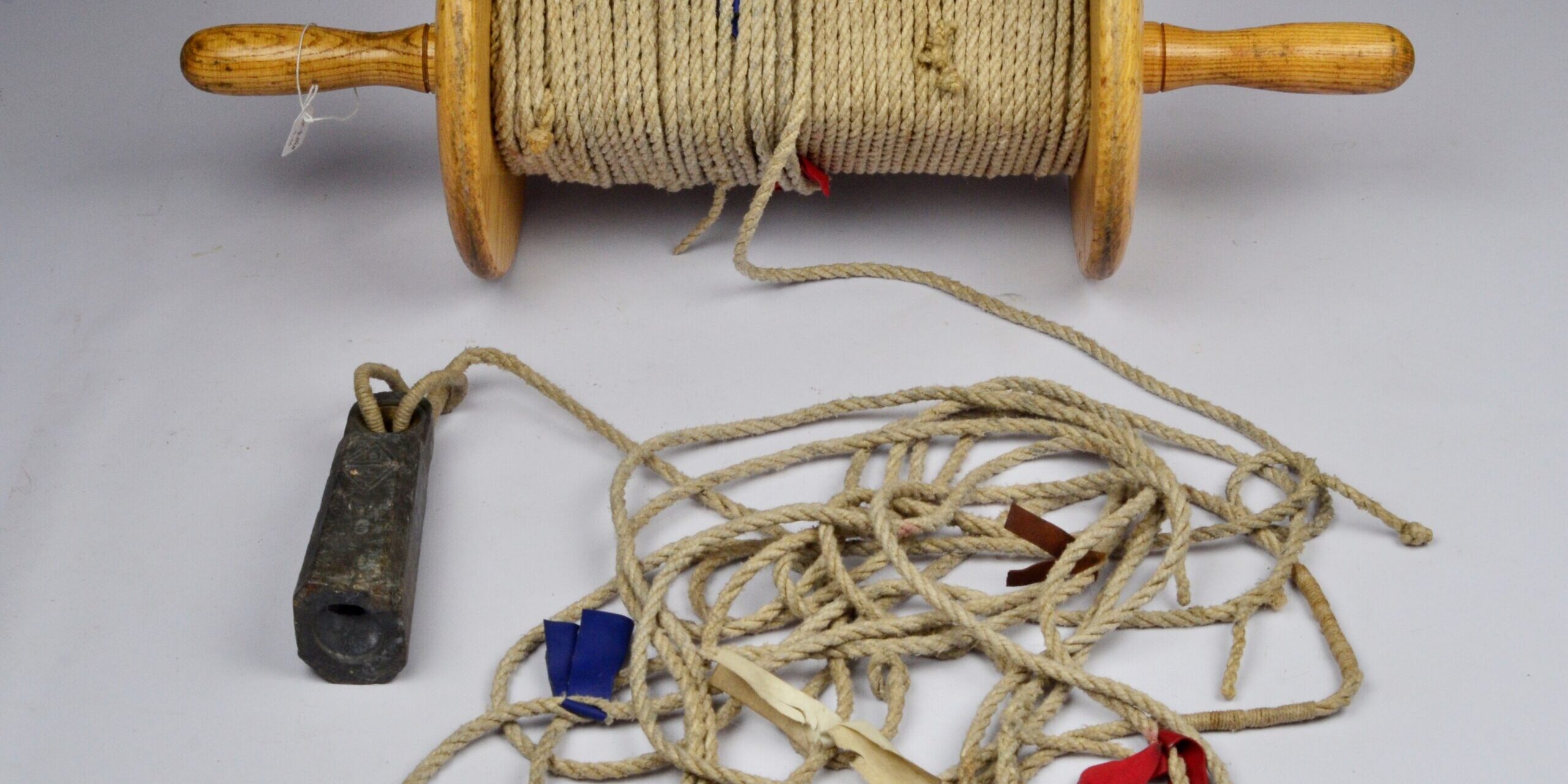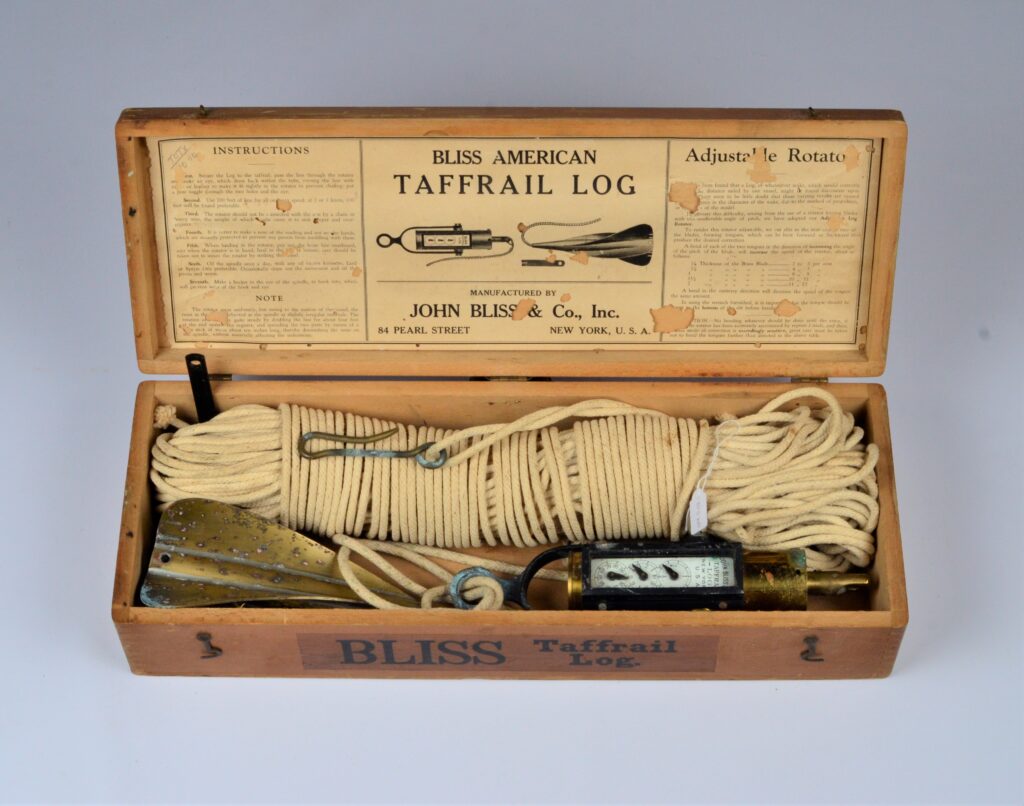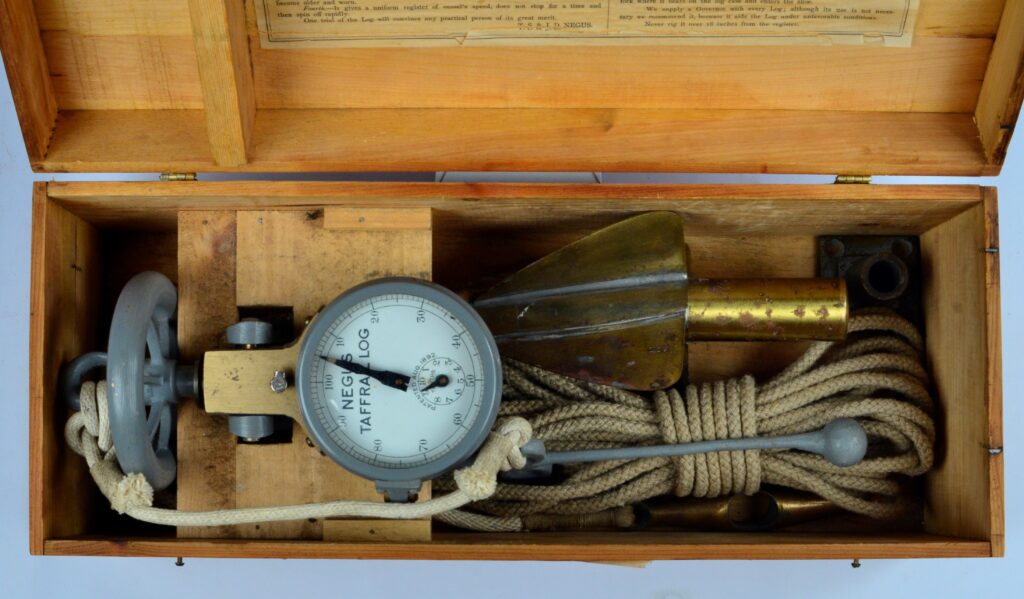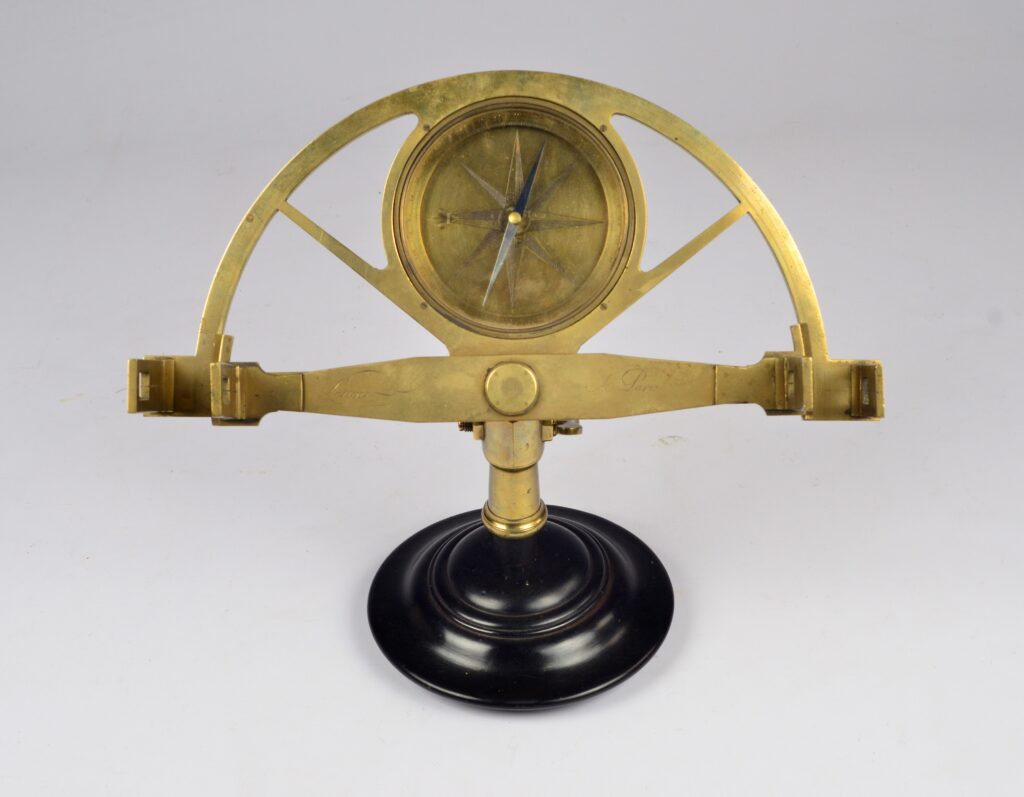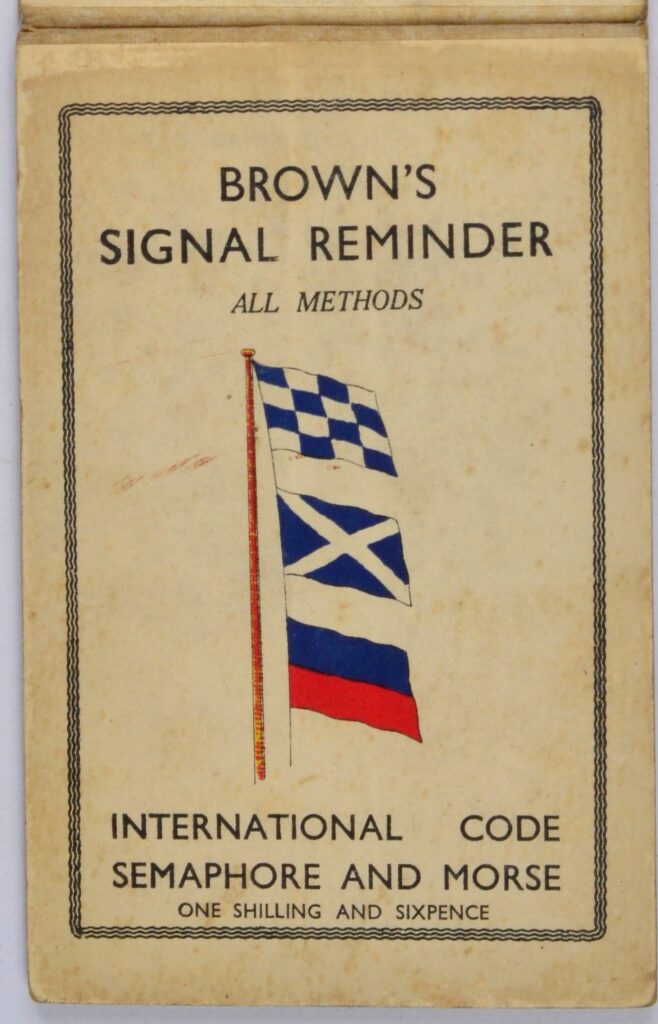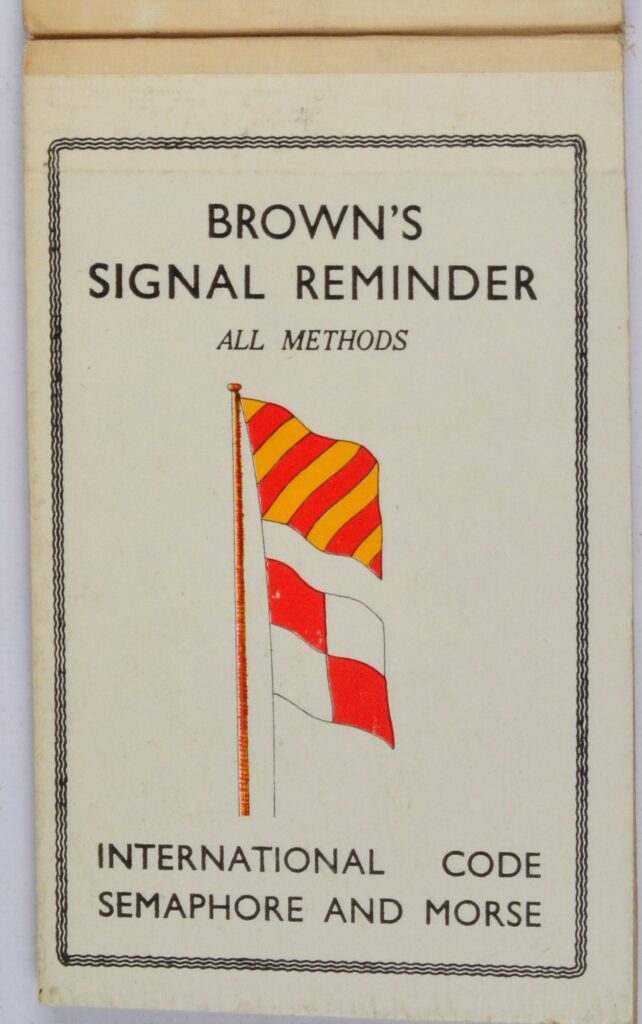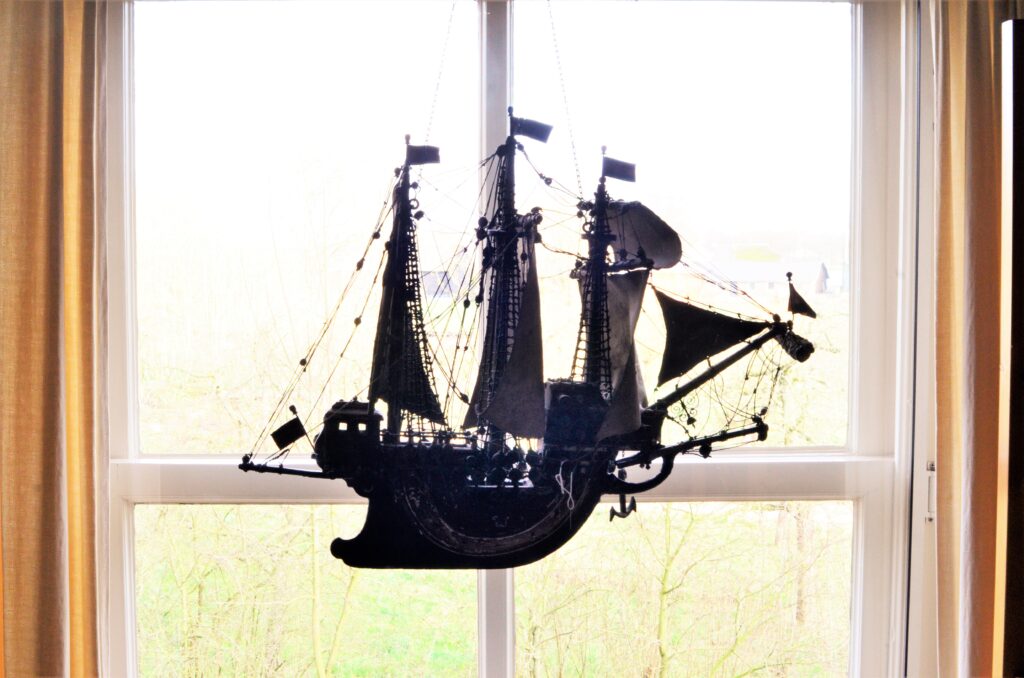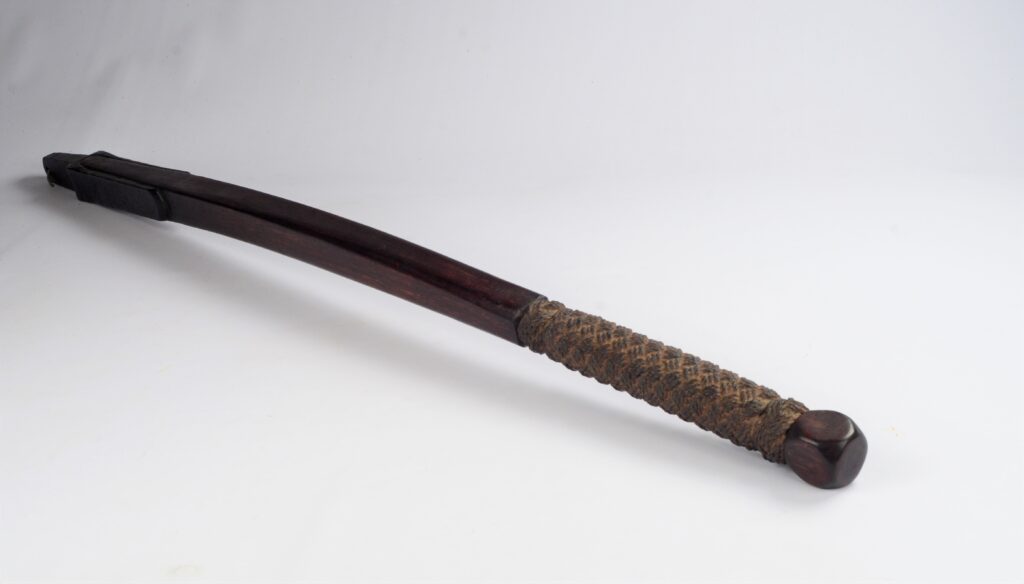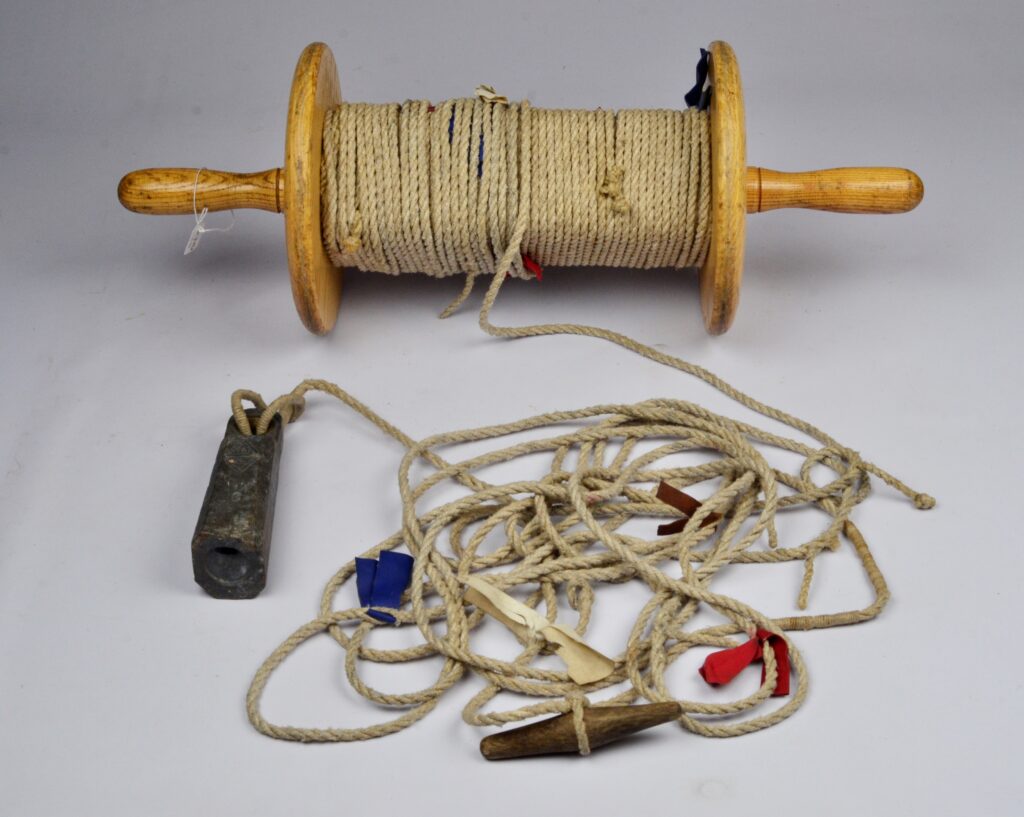Unused Bliss Taffrail Log – John Bliss & Co, New York
Bliss log with four blade propellor and 200 feet line. Taffrail type with sling pattern leg. Tibular register with three dials on porcelain face, stamped 38 under the dials. Rotator with four blades and stamped John Bliss & Co. Patented in 1876. Wooden box with label on the front site and instructions for use on…
Read MoreNegus improved Taffrail Log in wooden case – New York, ca. 1900
Improved Taffrail Log with integrated flywheel, made by T.S. & J.D. Negus, Pearl Street, New York. Gray painted brass body with enamel dial reading up to 100 miles and subsidiary dial reading up to 10 miles. With a four bladed, brass rotator stamped with initial N and Negus New York. Incorporates short length of log…
Read MoreLarge and important Graphometer – Lenoir, Paris, ca. 1780
Graphometers were used by cartographers and hydrographers to measure horizontal angles. This large graphometer, 38 cm wide, with compass is in a very good condition. The main directions on the compass are fully marked with Nord, Sud, West en Ouest. The two scales are engraved by hand. The instrument is made by Etienne Lenoir (1744…
Read MoreBrown’s Signal reminder – Glasgow, England, ca 1955
Four pieces of card 11×17 cm, hinged together as a handy and compact summary of international signals at sea to be distinguished from the Brown’s International Guide to Signal. Catalog: BK.1-17 Date: ca. 1955 HW: 11×17 cm Publisher: Brown, Son & Ferguson Ltd., Glasgow Origin: England Condition: in good condition with signs of use
Read MoreBrown’s Signal reminder – Glasgow, England, ca 1969
Five pieces of card 11×16,5 cm, hinged together as a handy and compact summary of international signals at sea to be distinguished from the Brown’s International Guide to Signal. Catalog: BK.1-16 Date: ca. 1960 HW: 10,5×17 cm Publisher: Brown, Son & Ferguson Ltd., Glasgow Origin: England Condition: perfect
Read MoreBrown’s Nautical Almanac – Brown, Son & Ferguson Ltd, Glasgow, England
Different volumes of the Brown’s almanac. Catalog: BK.1-05 Date: diverent Condition: good with signs of use
Read MoreHanging ship model of a Carrack – Netherlands, 19th century
In many seafaring nations ship models hang in churches. This is also the case in the Netherlands. They may have metaphorical significance. Determining position and setting course is important not only at sea, but also in normal life. This carrack is an not seaworthy fantasy model. It would immediately capsize upon launch. The two suspension…
Read MoreTiller – 20th century
Beautifully covered wooden tiller in excellent condition. Length 110 cm. Catalog: MA.1-30 Date: 20th c. L: 110 cm (43 in) Signed: not signed Origin: England Condition: perfect
Read MoreDeep Lead with line for shallow waters – Davis, London, late 19th century
Octagonal deeplead of 6 lbs (Davis, London) with leadline on a reel to find waterdepth and type of soil. The length of the line is 25 fathoms. At equally distances, every fathom, small tarpaulin flags – white, blue, red and leather. Every five fathom a little markline with one, two, three, four or five knots.…
Read More